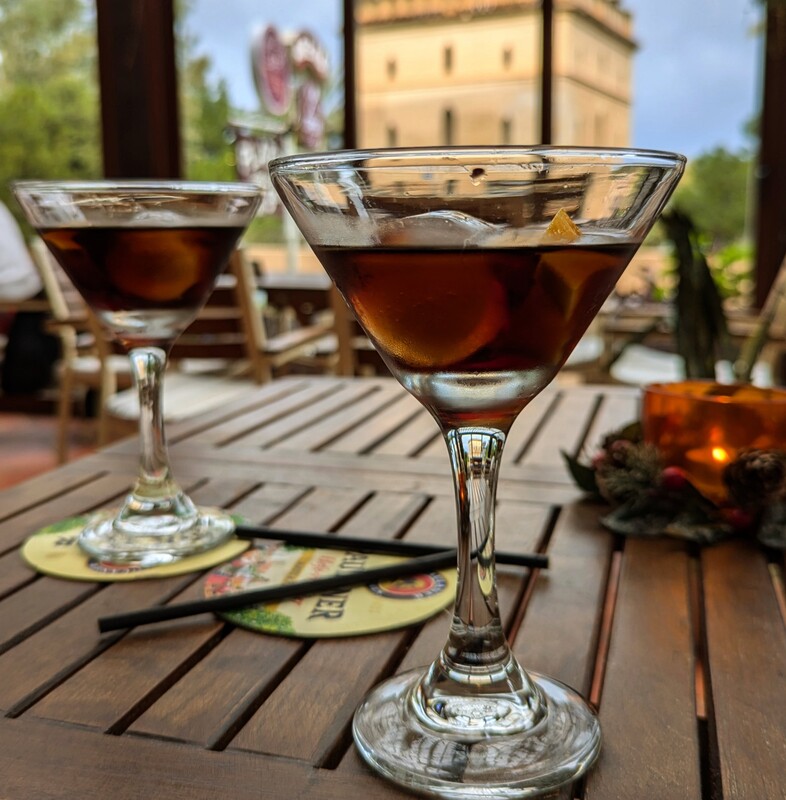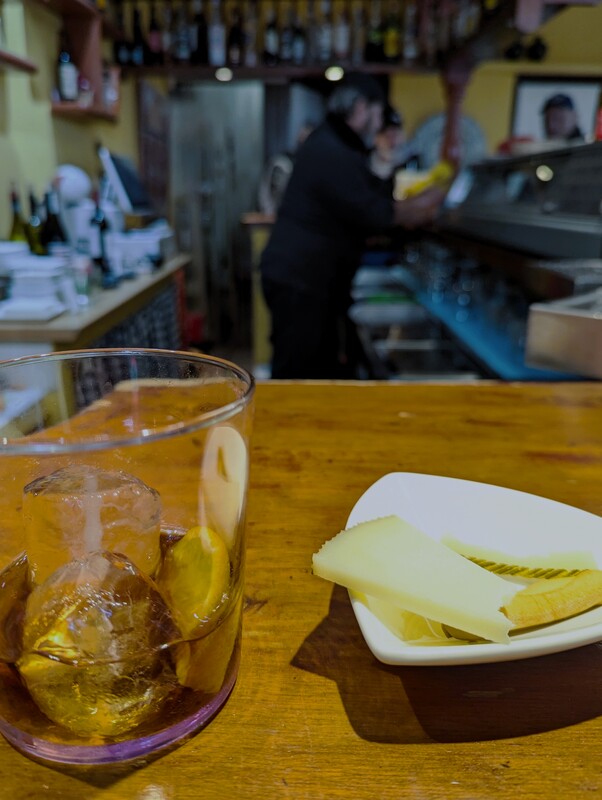|
When you next visit (or first visit) Spain, might we make a humble suggestion? As you’re ordering your fancy paella or ham (i.e., jamon iberico) – worrying about whether or not the waiter will understand your mangling of the Spanish language – make sure you don’t get too anxious and forget to order a glass of vermut. This is not a misspelling, but the way those clever Spaniards spell the more well-known ‘vermouth’ of French and Italian fame. “But isn’t that more of a mixer for a Manhattan or a martini?” you might ask. In the case of French or Italian vermouth, you would be correct, but not so for vermut. We discovered this purely by chance. We had planned to try some of the more unusual drinks that the East Coast of Spain had to offer. Our list included Mistella (i.e., a sweet muscat wine where the inclusion of alcohol is used to stop fermentation and keep the natural sugars available) and Frigola de Tomillo (i.e., a liqueur with dominant flavors of thyme, of all things). We found neither of these tipples in the first bar we went into, but lots of signs for vermut. When in doubt, follow the locals, and our conception of vermouth was forever changed. How is Spanish vermut different from French and Italian vermouths? We enjoy regular vermouth, and always keep at least two bottles in the fridge. However, we primarily use it in cocktails. Vermut, on the other hand, is rarely mixed, and is much easier to drink. We’ve heard that the Spanish have a philosophy of “a little bit, a lot of time”. This goes not only for tapas, but for vermut as well. It’s not uncommon to slowly drink a glass here, a glass there, as you meander your way through several local tapas bars. This would probably be more difficult with French or Italian vermouth. The Spanish stuff is much more drinkable, but it’s hard to pick out the reasons why. Both red vermouth and the many shades of Spanish vermut are sweet and have some nice herbal complexity, but there’s something about vermut that makes you want to imbibe more and more. Maybe it’s the freshness of the herbs or the fact that some manufacturers only use grape sugar for sweetness, but this is a special drink we could (and did) drink all day - very slowly, of course.
The Composition of Vermouth As with most boozes, there are some rules you have to follow to warrant a name. Vermouths and vermuts must:
Other than these rules, the sky’s the limit. The Spanish varieties are uniformly sweet (i.e., semi- sweet to dessert-y sweet). They are also very herbal-y. The white ones, being more delicate, are flavored with flowers, herbs, and anise whereas reds give up bolder flavors of roots and seeds. One varietal we had mixed gentian root to augment the wormwood bitterness. Vermut also comes in three broad colors: white, orange, and red. While hiking around a castle one day, we found little café that served all three (!!!). Our server looked at us very strangely when we ordered the full menu, but we did get to do an impromptu tasting while looking at the historical scenery. How to enjoy
Note: In part II of this series, we will describe a tour to one of the most famous producers of Spanish vermut.
0 Comments
Your comment will be posted after it is approved.
Leave a Reply. |
Categories
All
Archives
March 2025
|




 RSS Feed
RSS Feed